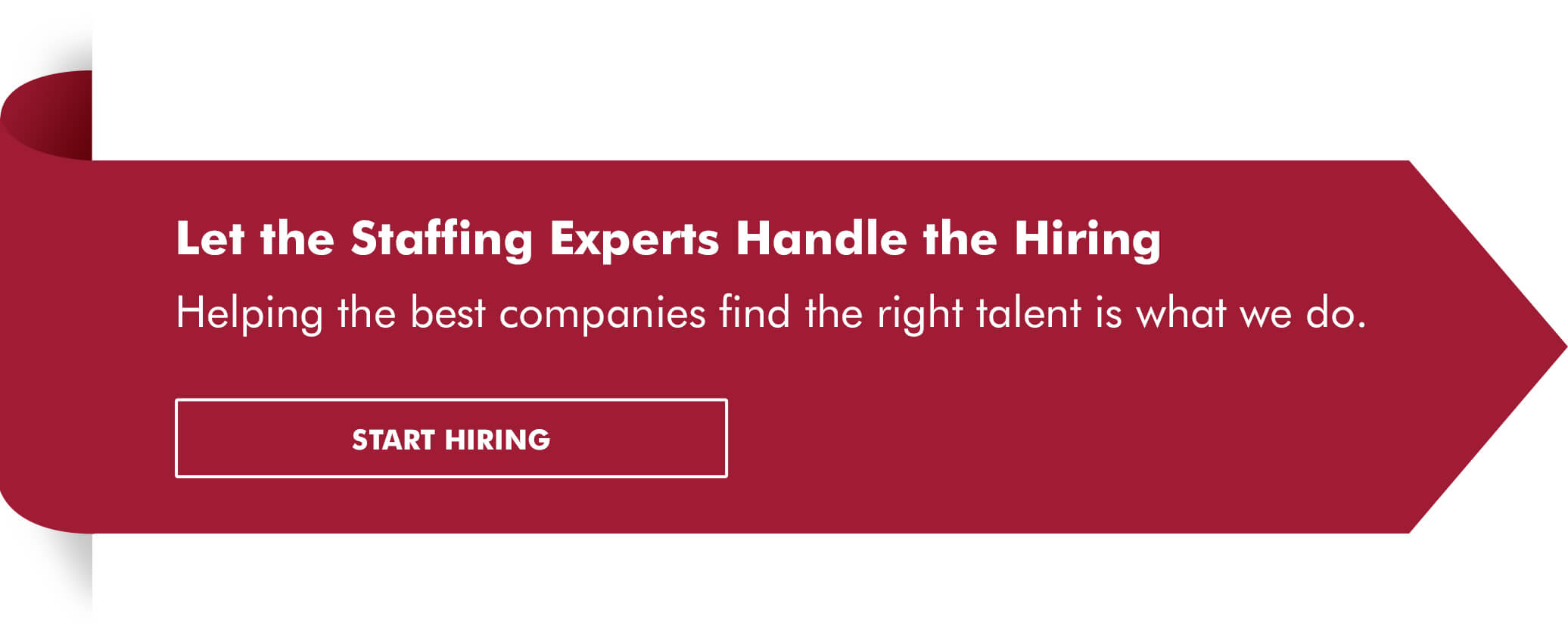While quiet hiring may be a new term, companies have taken advantage of the staffing approaches it describes for years — engaging contract professionals and permanently or temporarily reassigning internal employees to new tasks.
The reason the concept has been rebranded and finds itself in the news today is an economy that has prompted fears of a recession in some quarters and also layoffs, alongside a still-short supply of skilled workers and a quits rate that remains historically high.
At face value, this may not seem to be a problem, but instead of laying off staff, many companies understand that they need to replenish their talent pipeline to support future growth and avoid playing catch-up if they wait until conditions improve.
The challenge they face is an average time-to-hire of six weeks for a mid-level employee, eight weeks for a manager or director and 11 weeks for senior leadership, according to Robert Half research. Specialized roles in very high demand can take much longer to staff.
Depending on the company, quiet hiring can mean redeploying some employees, promoting from within, bringing in contract workers or all three. Employers have been increasingly embracing these approaches because they give them faster access to the talent they need amid a global shortage.
Contract talent offers flexibility to businesses
Contract professionals can typically begin work quickly, bypassing the long time it takes to hire. Engaging them when core staff is overworked can prevent burnout, assure that work is distributed evenly, and bring new ideas to the organization. But there are longer-term considerations that also make contract talent attractive to companies.
When the economy improves and more companies resume hiring, firms with contract professionals will not need to go to market as fast and compete for talent in an even tighter hiring environment where salaries may again skyrocket. They can then either convert top-performing workers to permanent positions or keep them on a contract basis. In the meantime, the business can show the best workers why it is a great place to work.
With contract talent, managers can choose from a broad spectrum of experience levels, specializations and availability. These professionals can be used singly, in teams or, for the most complex projects, working under the direction of outside business consultants in arrangements known as managed solutions.
Looking to hire contract professionals? Learn how Robert Half can help.
Staff reassignments can benefit both employer and employee
Besides turning to external resources, quiet hiring also involves the redeployment of internal staff. One example is what traditionally has been known as hiring from within — staffing open positions with current employees without publicly advertising the job openings or conducting formal recruitment processes. Companies assess the skills of all employees, and those deemed to have the capability are asked to assume tasks or full roles that have proved difficult to staff, in some cases jeopardizing the operations of the business.
But redeployment can also be accomplished by temporarily moving staff to new roles or functional areas, sometimes including permanent job redesign. This can provide growth opportunities for workers, many of whom are especially keen on professional development today.
In this way, quiet hiring can be linked to upskilling and career pathing initiatives within a company. By identifying employees with potential and providing them with opportunities for training, development and advancement, employers can invest in their existing talent pool and prepare these workers for future roles.
This approach can also help boost employee morale, increase retention, and foster a culture of continuous learning and development. That, in turn, makes it easier to gain the buy-in of employees who the business wants to assign to new responsibilities.
“The message to employees [about redeployment and job redesign] should not be ‘You’re interchangeable,’” said Emily Rose McRae, who leads the Future of Work research team in consulting firm Gartner’s HR practice. “It should be ‘You are valued, and we want to place you where you can have the biggest impact on the business.’”
Companies may implement quiet hiring in several ways:
- They can issue internal job postings or announcements shared only with existing employees. This allows current staff to express interest and apply for open positions before external candidates are considered.
- They can create internal talent pools or talent marketplaces where employees can showcase their skills and interests, and managers can identify potential candidates for open roles or temporary reassignments. These include job rotation programs, internal career fairs and career sites on the company intranet.
- They can encourage employee referrals to identify suitable candidates from within the organization.
The pros and cons of quiet hiring
Here’s a look at some of the potential upsides and downsides of the quiet hiring approach:
Pros:
- Quiet hiring by internal promotion can save on recruitment costs such as advertising, agency fees and onboarding expenses, as employees are already familiar with the organization’s culture, processes and policies. Likewise, redistributing tasks among current employees during a slowing economy can be a proactive approach to managing workforce costs.
- Hiring internally can be quicker than external recruitment, as there may be no need for lengthy screening and interviewing processes, and internal candidates may require less onboarding and training.
- Temporary reassignment allows employees working on less-important tasks to handle critical gaps in the organization until other arrangements can be made through outside hiring or redesigning the work so that employees get a chance to take on their new roles on a permanent basis.
- Providing career advancement opportunities through quiet hiring can boost employee motivation, leading to higher engagement and productivity. It can help retain top talent, as employees may be more likely to stay and grow with a company that invests in their development and career progression.
Cons:
- While upskilling initiatives can help bridge skills gaps, not all internal candidates may possess the required skills or qualifications for open positions, which may affect the quality of the talent pool for internal reassignment and promotion.
- By not advertising job openings externally, companies may miss out on potential candidates with unique skills or experiences who could bring fresh ideas and perspectives to the organization.
- Quiet hiring practices may lack transparency, leading to perceptions of favoritism or lack of equal opportunities for all employees, which can negatively impact employee morale and engagement.
Finding a balance among these pros and cons ensures transparency and fairness, continued employee engagement and the ability to maintain diversity within the organization.
Whether quiet hiring is accomplished by engaging contract talent or redesigning jobs, firms can maintain operational efficiency and flexibility during shortages of specialized workers. While it cannot be the answer to all company hiring challenges, quiet hiring can help organizations optimize their existing workforce, unlock the potential of existing staff by presenting them with new opportunities, and minimize recruitment and onboarding costs.








